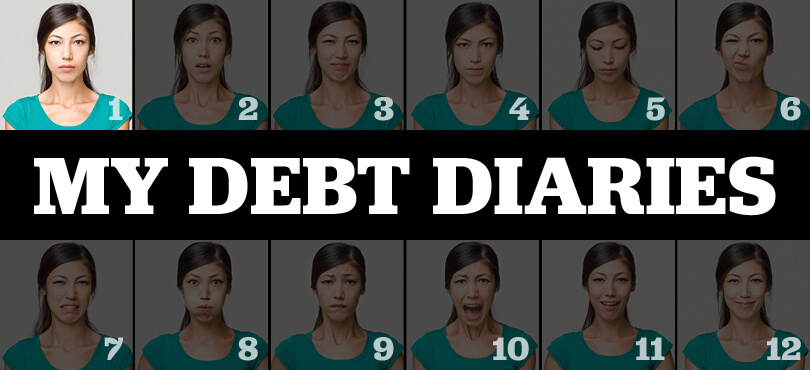How I fell into a chronic loop of debt addiction
The Debt Diaries, Step One: Admit the problem
Advertisement
The Debt Diaries, Step One: Admit the problem
 One woman’s path of recovery through her money troubles through 12 steps. Step One involves surrendering with an admission that you are powerless over debt and your life is unmanageable
November 2016. I’m standing outside a gloomy storage facility, stamping my feet like a pony to keep warm. The owner comes out to let me in. I’ve been talking to him on the phone for months; after a series of humiliating phone calls, this is the first (and last) time I will see him face to face.
“You can’t come up with the money?” he asks me. “Any of it?”
“No,” I say. “I’m really sorry.”
I have a unit here that I pay $200-a-month for. Well, I used to. I haven’t been able to pay it for months and I can’t pay off the $1000 balance I now owe.
One woman’s path of recovery through her money troubles through 12 steps. Step One involves surrendering with an admission that you are powerless over debt and your life is unmanageable
November 2016. I’m standing outside a gloomy storage facility, stamping my feet like a pony to keep warm. The owner comes out to let me in. I’ve been talking to him on the phone for months; after a series of humiliating phone calls, this is the first (and last) time I will see him face to face.
“You can’t come up with the money?” he asks me. “Any of it?”
“No,” I say. “I’m really sorry.”
I have a unit here that I pay $200-a-month for. Well, I used to. I haven’t been able to pay it for months and I can’t pay off the $1000 balance I now owe.
NEXT STEP: ‘I was trying to fix my pain with spending‘I’ve been on the phone juggling creditors for several weeks now. That $1,000 is just not going to magically appear. He sighs. “Well, OK,” he says. “You’ve got five minutes in there.” I go down three flights of stairs with the manager on my tail. He opens my unit and I peer in. When I moved from a large condo to a room in a friend’s house, I put most of my stuff in this storage unit. Almost everything I own is in there. All my furniture, all my books, all my carefully chosen home accents (pink pillows, cozy blue bathmats). “Five minutes,” he reminds me. “And only one box.” I go in and open box lids, trying to decide what is essential. Time ticks down. Luckily, I have put all my most important papers in one box: my passport, clips of articles I wrote, old university papers, my favourite books. I carry the box out into the hallway. The man pulls down the steel door and locks my unit. The following week, everything in the unit will be sold at auction. Within a few months, I will declare bankruptcy, move home and kind of lose my mind. And then, because I believe the universe is benevolent (if also possessed of a grim sense of humor) I will find my way out of hell.
Affiliate (monetized) links can sometimes result in a payment to MoneySense (owned by Ratehub Inc.), which helps our website stay free to our users. If a link has an asterisk (*) or is labelled as “Featured,” it is an affiliate link. If a link is labelled as “Sponsored,” it is a paid placement, which may or may not have an affiliate link. Our editorial content will never be influenced by these links. We are committed to looking at all available products in the market. Where a product ranks in our article, and whether or not it’s included in the first place, is never driven by compensation. For more details, read our MoneySense Monetization policy.
Share this article Share on Facebook Share on Twitter Share on Linkedin Share on Reddit Share on Email
DA was started in Newton, Massachusetts.